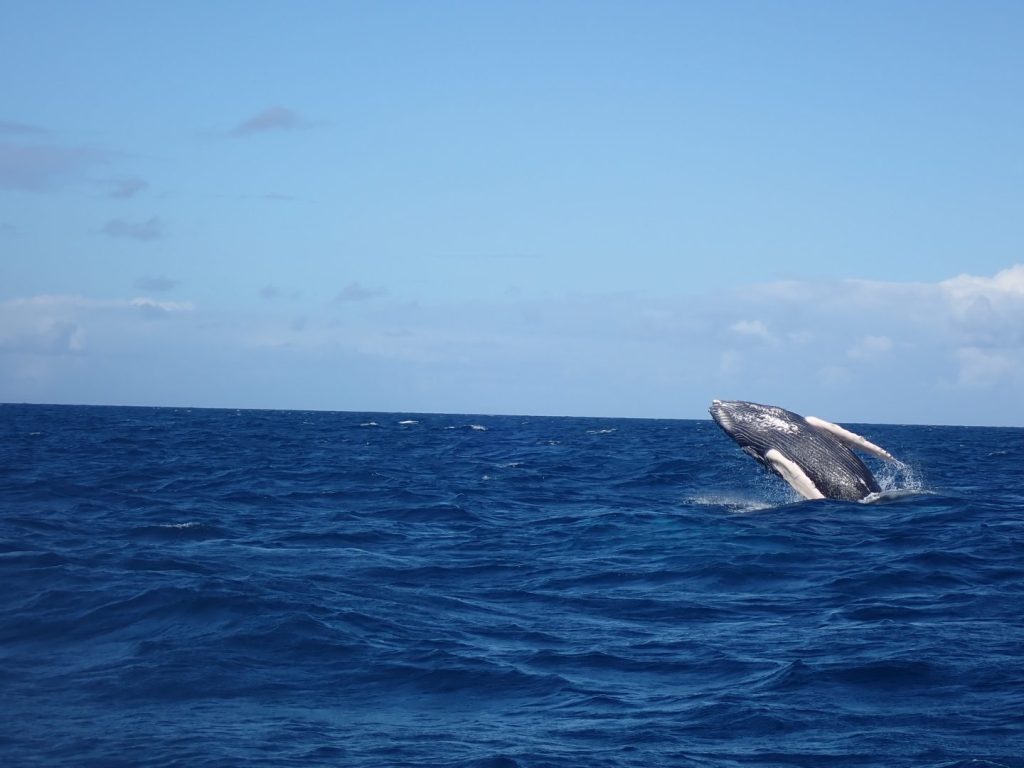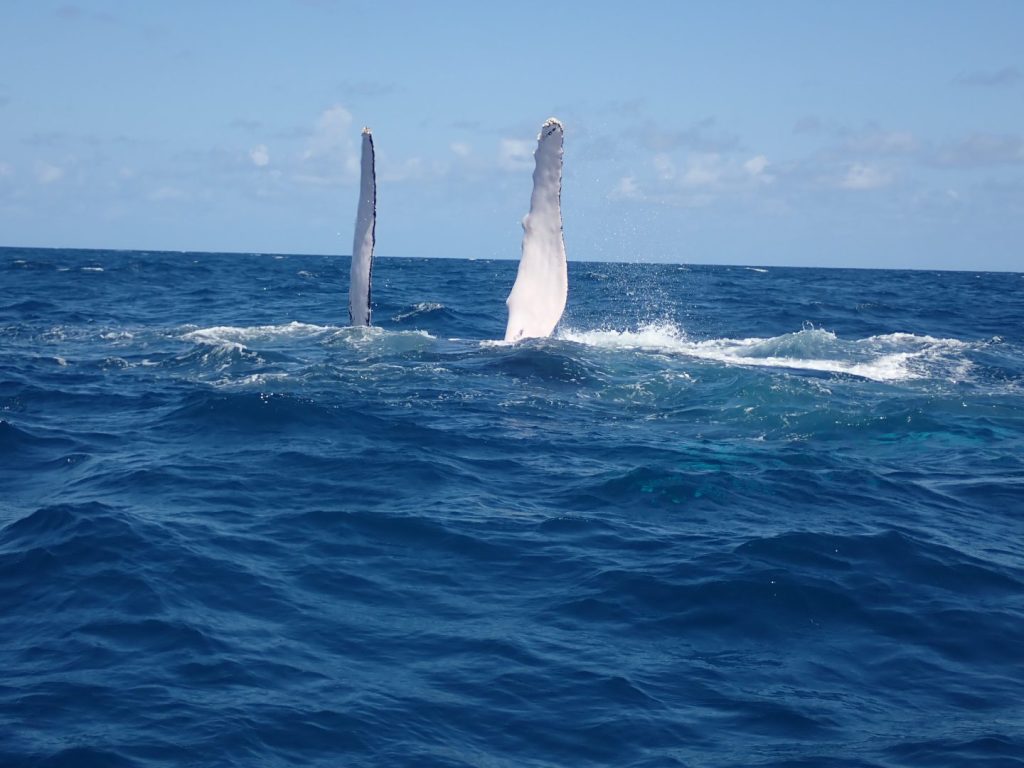March 25 – April 1, 2023
Week Ten of our 32nd Season
This year Aquatic Adventures embarks on its 32nd season of providing our guests the unique opportunity to encounter the North Atlantic humpback whales on their breeding and calving grounds, the Silver Bank. As the season unfolds, we’ll highlight some of the various encounters and experiences of our guests each week. We hope you enjoy following along!
Nothing is ever guaranteed in nature and this week we were reminded of why the Silver Bank is so special and how positive attitudes, understanding and patience will eventually pay off. For multiple days we were faced with adversity. The visibility below the surface on the bank was consistently low making it challenging for the guides, who typically provide close in-water encounters. Even if a scout was able to locate a whale under the surface, the whales, not being able to see what was approaching them, were easily spooked and moved off before the guests were able to settle into formation. Fortunately, our guests were understanding of this being a reality and continued to thoroughly enjoy the abundance of surface activity. All week we encountered rowdy groups of nine whales or more, mothers and calves breaching time and time again and escorts putting on displays of grandeur, lob tailing and breaching. As we reached the latter part of the week, the winds calmed, making time in the tender quite pleasant and while the Aquatic Adventures crew served up fresh fruit, candy and Pringles potato chips, the guests became very good at spotting. “Three o’clock, four boat lengths”, “Twelve o’clock, on the horizon!” Jokes were told and stories were embellished all in good humor. There is something about being ninety miles off shore, surrounded by nothing but blue water and sunshine that brings out the best in people.

This is Aquatic Adventures’ tenth week on the Silver Bank this year. We have been here long enough to see newborn calves just weeks old grow into small bundles of energy, testing the limits of their abilities and the patience of their moms. We have seen the smaller rowdy groups of the beginning of the season become larger, with nine or ten whales vying for the remaining females. These are all normal circumstances; we watch calves grow up and learn new abilities, we see the transition of male to female ratios and the behaviors that follow. This week, however, to our surprise, we encountered a mother with a calf that could have only been a few weeks old. The calf was very small, light in color and still had its dorsal fold, all indications of a very young individual. There was no way we were going to put anyone in the water with this pair, nor were we even going to follow her for long; we just watched for a little while as they passed, not wanting to add any extra stress on the new mother. It had been at least five weeks since we had seen a calf this small and with a gestation time of perhaps ten to eleven months, this mother must have mated at the very end of last season. We left them almost as soon as we found them in the hopes that for the next few weeks, this mother and calf will stay in the area and we can continue to watch the little one grow.

The meanings behind behaviors of the humpback whale are identified by scientists with a large degree of speculation. There is not a single human on earth that can definitively say what each blow, breach and sound means, but we are extremely lucky here on the Silver Bank to see these behaviors first hand and give our interpretation from a very unique perspective. One encounter this week; a mother and calf rest close to the bottom while an escort is close by, hoping to mate with the female. The mother is not interested, turning away from the escort, slashing at him with her tail and pushing her calf out of his reach. We can see this in the water and from the tender. It seems obvious that she doesn’t want anything to do with this male and eventually he receives the message as we watch her swim in one direction and him in another. Not long after the two split ways do we hear sounds coming through the hull of the tender. “Could it be?” A scout slips into the water and lo and behold it is the previous escort, and having been denied by the female, is now a lonely singer, perhaps trying to call in a mate. Of course it is difficult to say what these behaviors actually mean, but to us it seemed like the sad song of rejection and our hearts ached for this poor, lonely male. Amazingly, he continued to sing for over an hour and we finished our week keeping this very charismatic male company until the sun came down over the bank and our week came to a close.


The Aquatic Adventures team hopes that you are as inspired as we are to help sustain the humpback whale population. Through our partnership with the Center for Coastal Studies, we are helping to gain critical information on these charismatic creatures, and to seek ways to protect and preserve them. To find out more about this effort, join their mailing list or to make a donation, large or small, please visit: www.coastalstudies.org/aquaticadventures
We are proud to support SeaLegacy in their efforts to create powerful media to change the narrative around our world’s oceans. Their mission is to inspire the global community to protect our oceans. To learn more about SeaLegacy and help with this important mission, please visit: https://www.sealegacy.org
Thanks to all who have generously donated!
Learn more about Aquatic Adventures here.
Written by: Aquatic Adventures team member Gillian Morin
Edited by: Aquatic Adventures team member Heather Reser
Images: Aquatic Adventures

